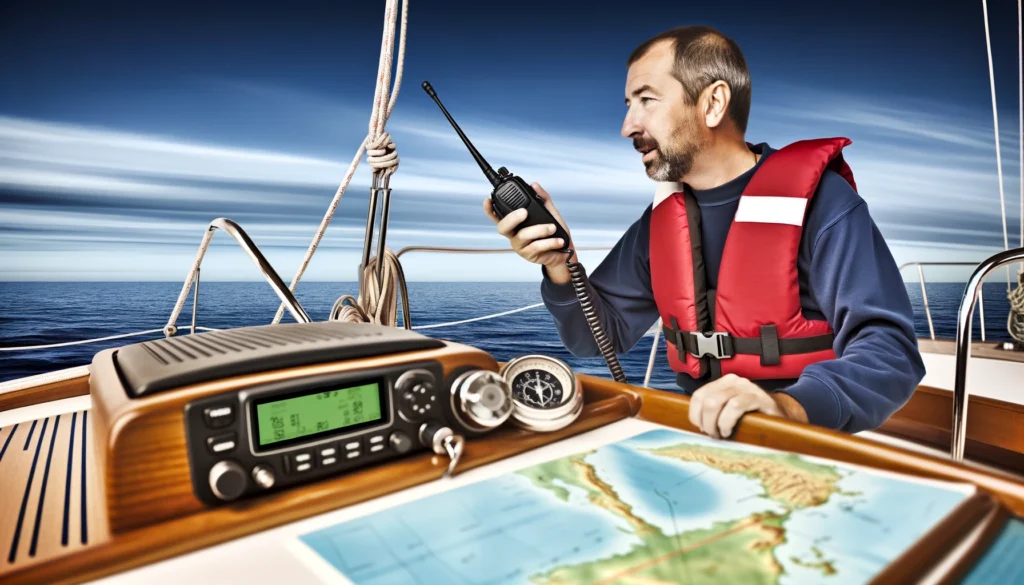Ahoy, fellow boating enthusiasts! As someone who’s spent countless hours on the water, tinkering with every imaginable type of vessel and sharing the joys of boating with friends and family, I’m thrilled to dive into a crucial aspect of maritime adventures: communication. Specifically, we’re going to navigate through the world of VHF (Very High Frequency) radio communication, a skill set that is as essential as it is fascinating. So, whether you’re embarking on your maiden voyage or looking to brush up on your communication skills, this guide will equip you with the essential VHF radio skills needed for safe and enjoyable boating.
Contents
Understanding VHF Radio
A VHF radio is your lifeline at sea. It’s not just a tool for chit-chat but a critical safety device for emergency communication and receiving navigational warnings. Unlike cell phones, VHF radios are designed to work in the marine environment, offering reliable communication even when you’re far from the nearest cell tower. Before we delve into the how-tos, it’s crucial to appreciate this device’s role in starting your boating journey safely and responsibly.
The Basics: Channel 16
Channel 16 on your VHF radio is the international distress, safety, and calling channel. It’s monitored by the Coast Guard and other mariners, serving as the go-to channel for emergency communication. If you find yourself in a situation needing assistance, this is where you broadcast your mayday call. But it’s not just for emergencies; it’s also the channel you use to initiate contact with other vessels or maritime facilities before switching to a working channel for further communication.
Making a Call: The Art of Clarity
Communicating over the VHF radio requires clarity and brevity. Begin by identifying whom you’re calling, followed by your vessel’s name and your message. For example, “Marina Dock, Marina Dock, this is Sailing Vessel Wanderlust, over.” Wait for a response before continuing. Remember, clear and concise communication is key to effective VHF radio use.
Emergency Protocols: Mayday and Pan-Pan
In maritime tradition, “Mayday” signals a life-threatening emergency, while “Pan-Pan” indicates a situation that’s serious but not immediately life-threatening. If you’re facing a dire situation, broadcast “Mayday, Mayday, Mayday,” followed by your vessel’s name, location (latitude and longitude, if possible), the nature of your emergency, and the type of assistance needed. For urgent but non-life-threatening situations, “Pan-Pan” serves the same purpose but with less immediacy.
Digital Selective Calling (DSC)
Modern VHF radios come equipped with Digital Selective Calling, a feature that allows you to send an automated distress signal to the Coast Guard and other DSC-equipped vessels. This feature is a game-changer, as it includes your vessel’s information and location, significantly improving response times. Ensure your radio is connected to your GPS and that you’ve registered for an MMSI (Maritime Mobile Service Identity) number to make full use of DSC capabilities.
Privacy and Etiquette
While the airwaves are open to all, it’s important to respect privacy and follow proper radio etiquette. Keep non-essential chatter to designated working channels and always give priority to safety and distress communications. Additionally, familiarize yourself with the phonetic alphabet and standard marine VHF phrases to improve clarity and avoid misunderstandings.
Regular Checks and Maintenance
Like any safety equipment, your VHF radio requires regular checks and maintenance to ensure it’s ready when you need it most. Test your radio’s functionality before setting sail, check the battery life on handheld units, and ensure your antenna is properly mounted and unobstructed. A well-maintained radio is a reliable link to the outside world.
Practical Training
While reading about VHF radio operation is a great start, nothing beats hands-on experience. Consider enrolling in a VHF radio course offered by maritime organizations. These courses provide practical training, familiarizing you with radio operation, etiquette, and emergency procedures, further enhancing your safety and confidence on the water.
Boating Tips for Newbies
Embarking on your boating journey is an exciting adventure, filled with learning opportunities and the joy of discovery. As you become more familiar with your vessel and the open water, remember that communication is a cornerstone of maritime safety. Incorporating VHF radio skills into your repertoire is not just about following regulations; it’s about ensuring that every trip is as safe as it is enjoyable.
Setting Sail with Confidence
Armed with your newfound knowledge of VHF radio communication, you’re ready to set sail with greater confidence. Remember, the sea is a vast and beautiful place that demands respect and preparedness. By mastering the art of VHF radio communication, you’re not just enhancing your own safety; you’re contributing to the safety of the entire boating community.
In the world of boating, where adventures are as boundless as the horizons, let’s ensure our journeys are marked by not only the memories we make but also the safety practices we uphold. Here’s to clear skies, calm seas, and clear communication. Happy boating!



